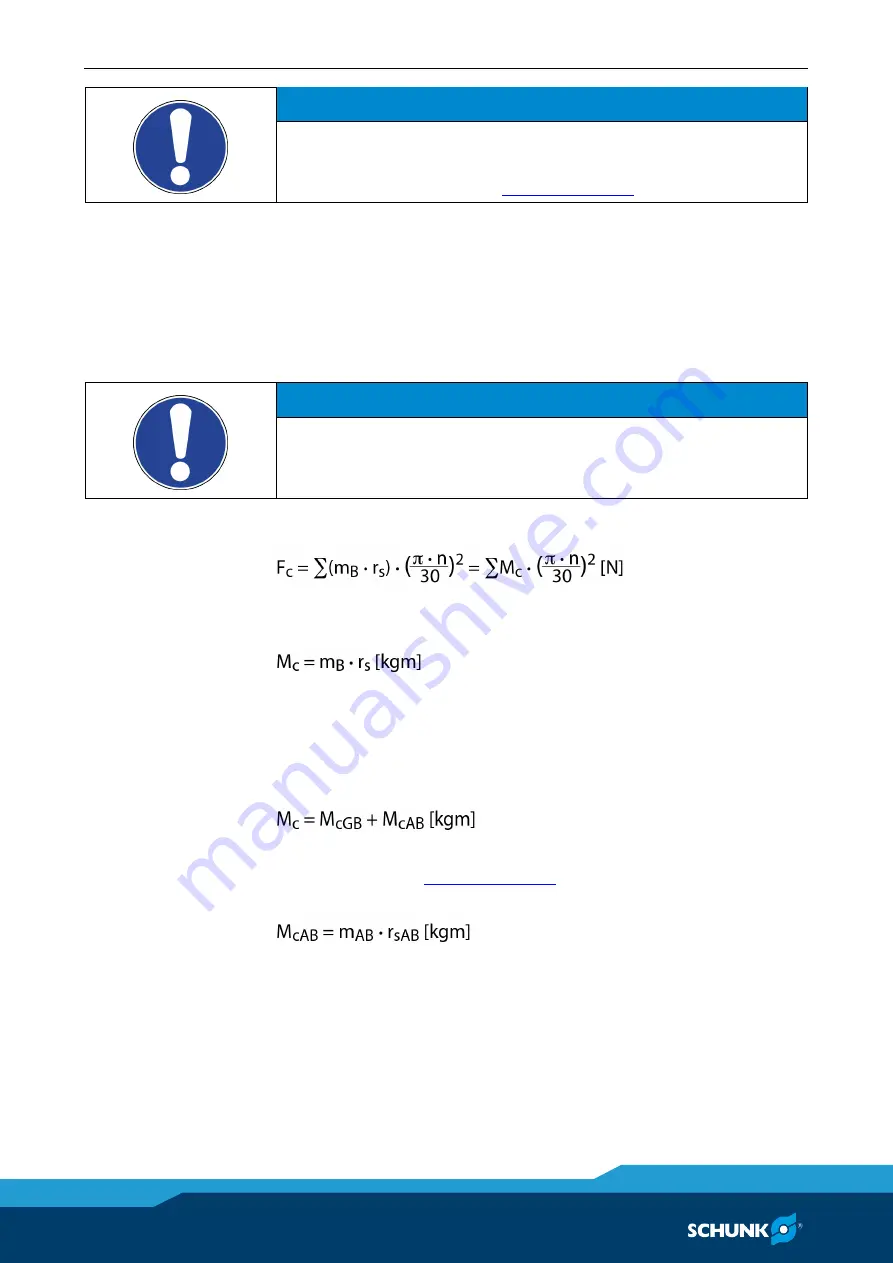
Technical data
24
01.00|ROTA THWplus |en
NOTICE
This calculated force must not be larger than the maximum
clamping force
Σ
S engraved on the chuck.
See also "Chuck data" table
From the above formula it is evident that the sum of the effective
clamping force F
sp
and the total centrifugal force F
c
is multiplied by
the
safety factor for the clamping force S
sp
. According to VDI
3106, the following also applies here:
S
sp
≥ 1.5.
The
total centrifugal force F
c
is dependent on both the sum of the
masses of all jaws and on the center of gravity radius and the rpm.
NOTICE
For safety reasons, in accordance with DIN EN 1550, the centrif-
ugal force may be a maximum of 67% of the initial clamping
force.
The formula for the calculation of the total centrifugal force F
c
is:
For this,
n is the given speed of rotation
in
RPM
. The product
m
B
∙ r
s
is referred to as the centrifugal force torque M
c
.
In case of toolholders with split chuck jaws, i.e., with base jaws and
top jaws, for which the base jaws change their radial position only
by the stroke amount, the
centrifugal torque of the base jaws
M
cGB
and the
centrifugal torque of the top jaws M
cAB
need to be
added:
The centrifugal torque of the base jaws M
cGB
can be found in the
table "Chuck data"
. The centrifugal torque of the
top jaws M
cAB
is calculated as per:
Calculation example: Required initial clamping force Fsp0 for a
given rpm n
The following data is known for the machining job:
• Gripping from the outside in (application-specific)
• Machining force F
spz
= 3000 N (application-specific)
6.3.2
















































